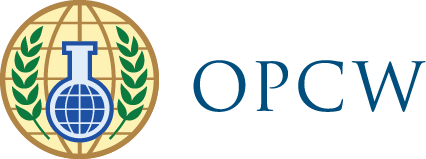Excerpts from the Statement by the OPCW Director-General Inter-Parliamentary Conference, Strasbourg, France, 20-21 November 2003.
Disarmament and non-proliferation are key elements to the preservation of international peace and security. In the declaration adopted after the meeting held in Thessaloniki, Greece, last June, the European Council made manifest its unequivocal commitment to uphold and implement multilateral disarmament and nonproliferation treaties, as well as its support for the multilateral institutions entrusted with verification of compliance with those treaties.
The OPCW plays a significant role in this field. A complex verification mechanism, comprising on-site inspections and monitoring, certifies that States Parties to the Chemical Weapons Convention thoroughly abide by their commitments. The Chemical Weapons Convention embodies the commitment of the international community to eliminate an entire category of weapons of mass destruction. In effect, it subjects the world?s largest stockpiles of chemical weapons and former production facilities to a comprehensive verification and destruction regime.
The verification regime is built on the combination of a unique scheme of data monitoring and onsite inspections, designed to assess that the activities conducted by States Parties are consistent both with the object and purpose of the (Convention) and with the contents of the declarations submitted by (States Parties).
The destruction of chemical weapons stockpiles and production facilities is a central aspect of the implementation of the Chemical Weapons Convention. Inspections are critical to the implementation of the verification regime set forth in the Convention. The vast majority of the verification resources allocated to the Technical Secretariat have been dedicated to chemical weapons-related inspections and a significant proportion, eighty percent, supports the verification of destruction operations.
Inspections to chemical weapons destruction facilities comprise monitoring the destruction activities through physical presence, which is done either in short-term campaigns, or, in the long-term by rotating on-site inspection teams in their monitoring responsibilities at continuously-operated facilities.
Thus far, the Technical Secretariat has been planning inspection activities, keeping a watchful eye on the efficient allocation of the means available for a successful completion of the activities lying ahead.
The task lying ahead is, indeed, challenging. During the current year, four continuously-operated and three non-continuously-operated chemical weapons destruction facilities have been in operation and are thus subject to inspection. It is foreseen that, in the course of the upcoming year, these numbers will mount to seven and six, respectively.
Therefore, not only is there a preference to optimise the use of resources but an actual need to do so, if the ability of the Technical Secretariat to duly comply with its mandate is to be safeguarded. The projections we have made make it clear that with the resources currently available and the present methodology employed, full and adequate compliance by the Technical Secretariat with inspection requirements would be impossible to achieve.
Recognition of this, and of the importance of destruction activities in the overall scope of verification activities, has led States Parties to request through the First
Review Conference that the Technical Secretariat conduct an analysis of the resources employed to this end, with a view to assessing the efficiency in their use and further optimising it.
The verification of destruction-related activities is primarily aimed at confirming two core aspects: the identity and quantity of the stocks of chemical weapons to be destroyed, on the one hand; and their actual destruction, on the other.
A cost-efficient approach to the systematic verification of chemical weapons destruction that may successfully tackle both aims can only be achieved by striking an adequate balance between the physical presence of inspectors and the various means of technical monitoring available for verification purposes, focusing attention on those activities which are absolutely necessary to attain the verification aims, minimising overlaps or unnecessarily recurring activities without adversely affecting the accuracy and credibility of the process.
The key to our success in this effort will be given by our ability to refine the existing verification regime by moving ahead in the ongoing task of seeking enhanced efficiency, further evolving towards a scheme progressively less resource-intensive, whilst preserving its overall efficacy. This will by no means be a revolution, but rather an evolution. This move will be sustained by consensus among States Parties and will be rooted in the lessons learnt from the practice accrued thus far.
The task lying ahead is complex but viable and necessary. We have to sustain the full-fledged implementation of the Chemical Weapons Convention within the crucial parameters of disarmament, non-proliferation and international co-operation in the peaceful uses of chemistry that must prevail in the implementation of its provisions.
The latent virulence of the threat posed by international terrorism adds a strong element of urgency to the need to successfully achieve chemical disarmament and non-proliferation and, for this, efficient verification of compliance is, of course, of undisputed essence.
The OPCW is ready to play its role in the global partnership against the spread of weapons and materials of mass destruction. To this end, better coordination and exchange of information among the key players in the field is indispensable.
